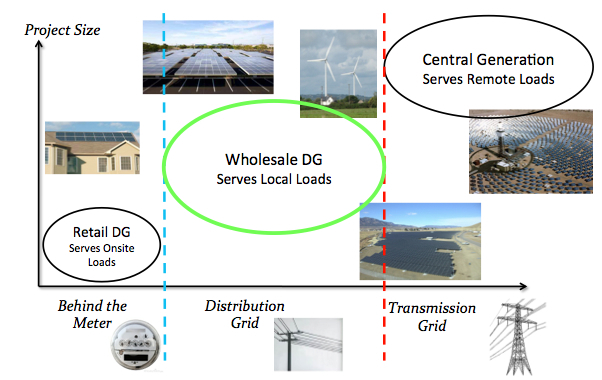The argument that renewables are too expensive just lost a lot of credibility. Long Island Power Authority (LIPA), one of the nation's largest municipal utilities, will save its customers nearly $84 million over the next seven years by increasing renewable generation.
That's right. Saving $84 million. Want to have a similar success near you? Read to the end.
Through its CLEAN Solar Initiative, LIPA is buying energy produced from solar projects throughout its service territory and paying a premium to projects sited on Long Island's grid-constrained South Fork. By driving the development of local solar capacity at critical points on its grid, LIPA will be able to defer spending hundreds of millions of ratepayer dollars on new generation and transmission infrastructure to serve this region. LIPA's transparency highlights the cost-effectiveness of local renewables and strengthens the Clean Coalition's long-held position that the locational value of distributed generation is both quantifiable and significant.
Not surprisingly, the New York utility is not alone in its pursuit of more local renewable capacity. Across the country, a number of forward-thinking utilities have announced plans to bring distributed generation online. Georgia Power -- an investor-owned utility serving more than two millions customers -- will bring 735 megawatts (MW) of local solar online by 2016 to protect ratepayers from the volatile costs of fossil fuels. Similarly, the municipal utility in Los Angeles will deploy 150 MW of local solar over the next two years, leveraging the development of local renewables to cost-effectively meet the city's renewable energy goals.
Although the motive for an individual utility to deploy more distributed generation may vary (avoiding grid congestion, creating local jobs, meeting renewable energy mandates, etc.), the method to achieve greater deployment of local renewables is strikingly similar. All of the aforementioned utilities are building on global experience by opening the wholesale distributed generation (WDG) market segment. WDG has proven to be the key market segment for rapidly deploying cost-effective renewables, and as expected, WDG constitutes the majority of renewable energy capacity deployed worldwide.
WDG refers to distributed energy systems that connect to the local distribution grid and deliver all their electricity to a utility for serving local energy demand. Given that WDG facilities connect directly to the distribution grid close to where energy is used, electricity from these generators does not require transmission infrastructure. Costs associated with the long-distance transmission of energy can comprise 25 percent or more of the total price a consumer pays for energy, so avoiding transmission results in substantial ratepayer savings -- as demonstrated by LIPA. Moreover, WDG facilities can come online quickly because they are built on underused urban spaces and previously degraded land, such as parking lots, rooftops, and abandoned industrial sites. Hence, WDG projects avoid lengthy and expensive permitting processes that can delay the construction of centralized power plants for decades.

Wholesale distributed generation (WDG) has been a missing market segment in the U.S.
Utilities like LIPA are leading the transformation of the U.S. energy market. By showcasing that the deployment of WDG projects can result in significant cost savings, these utilities are undermining the outdated but commonplace argument that local renewables are cost-prohibitive. As more WDG comes online, it will become undeniably clear that WDG is an economically attractive market segment that offers huge opportunity for communities across the country.
To accelerate the transition towards local renewables, the Clean Coalition created the CLEAN Resource Hub. The Hub contains a wealth of information -- including model policies, program design guides, and global best practices -- to help policymakers, utilities, and advocates open the WDG market segment. For more information about this new resource, join the Clean Coalition for an exciting webinar on Thursday, Sept. 26 starting at 11 a.m. PT / 2 p.m. ET. This one-hour webinar might just be what empowers you to change your energy mix.
